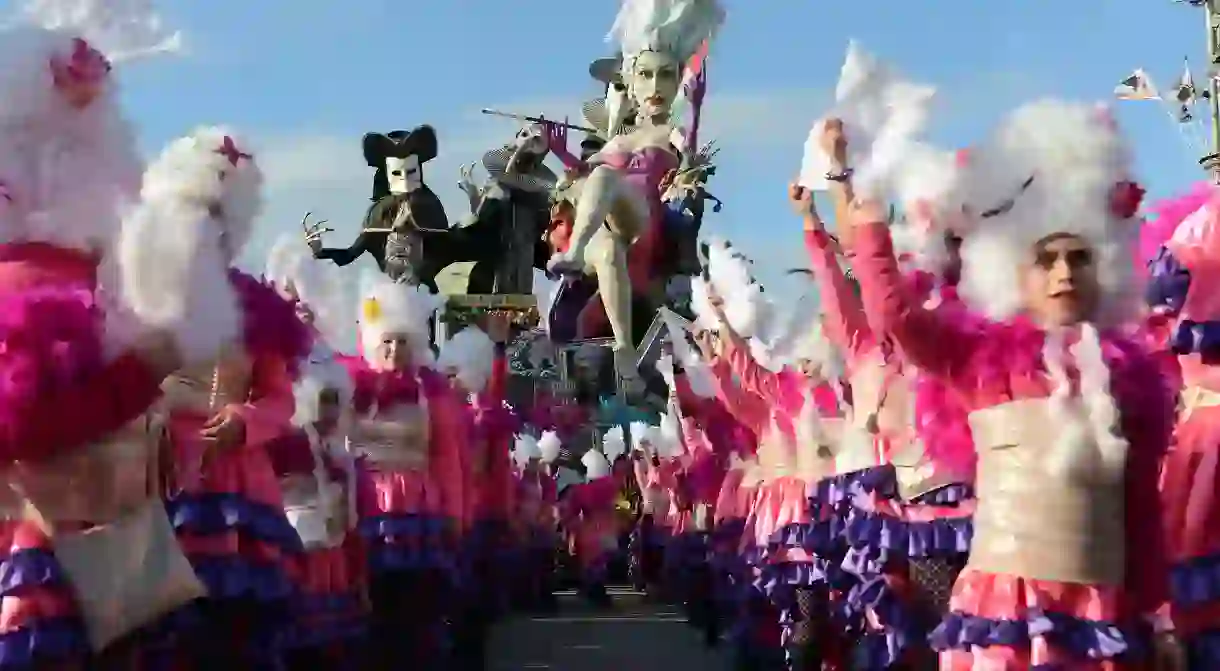Carnevale di Viareggio Is Europe’s Most Defiant Street Party

Each year, the Italian seaside town of Viareggio hosts a month-long carnival that rivals Mardi Gras and Rio de Janeiro for its spirit and vibrancy. Giant satirical floats, fancy dress and community spirit enliven the dark and dreary winter months. Culture Trip takes a look at the history of this eccentric, defiant street party, and how it could have only come about in Viareggio.



In the four weeks that precede Lent, people flock in their droves to the picturesque Tuscan beach town of Viareggio to unleash their inner jester. Foregoing their usual sartorial chic, the revellers let loose in the spirit of Carnevale – one of Europe’s largest festivals – with a riotous explosion of colour, craft and creativity.
For over 150 years, Carnevale di Viareggio has seen an endless procession of gigantic papier-mâché floats snake their way through its streets, cruising past glamorous seaside hotels, cafés, and restaurants.
These floats can be magnificent artistic constructions, acerbic political caricatures, or even multi-part public performances retelling old fairytales – the possibilities are endless. This year, one of the more eye-catching floats is a skyscraping Cristiano Ronaldo robot, arms flexed in celebration – an exhibit which is sure to divide opinion over footballing allegiances.



As the floats pass by, carnival goers swarm the streets in masks and fancy dress, drinking and dancing without a care in the world, moving to the beats that pump out from the convoy. It’s a time for shaking away the trappings of January and the first arduous month of the year; an official welcome into party season, and an end to the bleak midwinter.
Born somewhat accidentally in 1873, the Carnevale was originally intended to be a bit of flighty middle-class festivity, as a group of wealthy locals put on a parade of floats adorned with flowers to instil a bit of civic pride into Viareggio. The locals, dismayed to the point of militancy by the self-satisfaction of the carnival organisers, hijacked the event by donning masks and taking to the streets to protest and distract from the procession of floats.
This spirit of dissent and disobedience, of anarchy and iconoclasm, is at the core of the Carnevale; popular figures are celebrated, politicians are mocked and ridiculed, and everyone channels their frustrations and stresses into the carnival spirit. This is what makes the Carnevale such a singular experience, with more edge than Mardi Gras – it’s a party with a purpose.



Participants spend all year creating and building their floats. A basic structure of wood, metal and wire is covered in papier-mâché, in whichever direction the participants want to shape their exhibits. Carnival floats can be very large: several storeys tall, with hundreds of characters, and needing several dozen people to operate the figures and bring them to life. Due to their complexity, it is common for local architects, engineers, painters, sculptors and ceramicists to take part in their design and construction. Year on year, people try to outdo the heights of the previous Carnevale, and the result is consistently spectacular.
At the head of the Carnevale is the festival’s mascot, Burlamacco, a jaunty jester created by local painter Uberto Bonetti in 1930 to symbolise the carefree ethos of the carnival. Inspired by the theatrical masks of the Commedia dell’Arte, Burlamacco is an embodiment of Viareggio’s beachside spirit. Painted like the eye-catching striped umbrellas that line the shore, Burlamacco was intended to capture the two high-points of the Viareggian calendar: summer, and carnival. His black cloak, which sweeps behind him as he leads the festivities, represents nightfall, when the party really takes off.
It’s estimated that some 800,000 people descend on the Carnevale every year; young and old, from Turin to Udine, all celebrating with wanton abandon. Visit Viareggio and experience it yourself – just don’t forget to bring your mask and fancy dress.
















